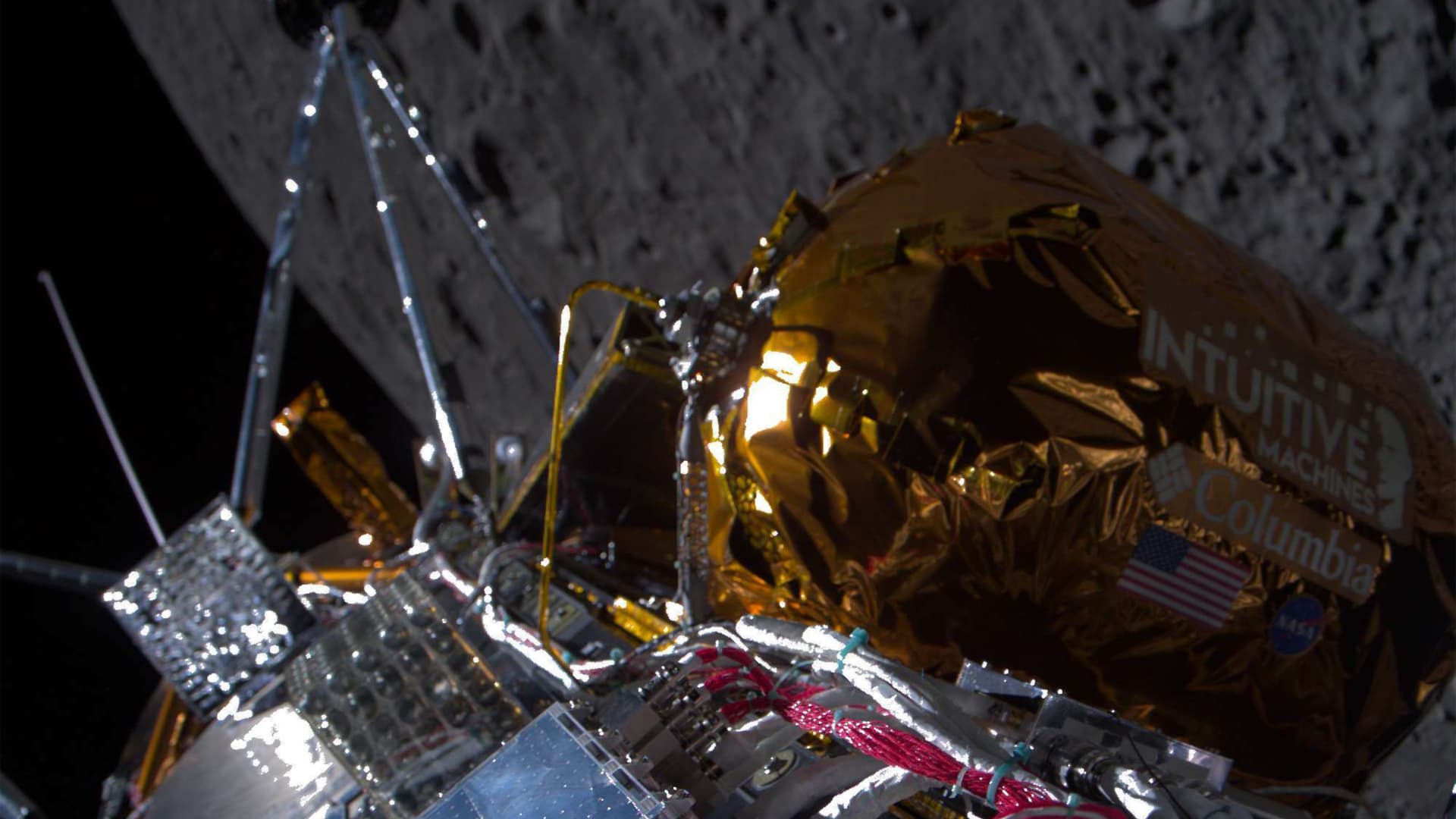Products You May Like
Lunar company Intuitive Machines is going for history on Thursday as it attempts to reach the moon’s surface in what would be the first American lunar landing since the Apollo era.
Intuitive Machines’ mission, known as IM-1, aims to soft land near the moon’s south pole at about 6:24 p.m. ET.
If successful, the company’s Nova-C cargo lander, named “Odysseus” after the mythological Greek hero, would be the first U.S. spacecraft to land on the lunar surface since 1972. Intuitive Machines would become the first company to pull off the feat — government agencies have carried out all previous successful landings.
The company’s stock dipped 3% in Thursday trading from its previous close at $9.32 a share.
Intuitive Machines, a Houston, Texas-based company founded in 2013, went public a year ago. After shares hit an all-time low in early January, the stock has surged more than 300% – a rally that Wall Street analysts describe as fueled by investor excitement around the IM-1 mission’s progress.
Go for landing
Odysseus will begin a series of maneuvers about one hour before the landing attempt, starting with “Descent Orbit Insertion.”
IM-1 is targeting the “Malapert A” crater, about 300 kilometers from the moon’s south pole. After landing, Intuitive Machines aims to operate Odysseus on the surface for up to seven days.
The mission launched on a SpaceX rocket on Feb. 15. It is carrying 12 government and commercial payloads — six of which are for NASA under an $118 million contract.
The hexagonal lander is 4.3 meters (or about 14 feet) tall, and its legs spread 4.6 meters (or about 15 feet feet) wide, making the spacecraft about the size of an SUV stood on its end.
NASA leadership emphasized before the launch that “IM-1 is an Intuitive Machines’ mission, it’s not a NASA mission.” IM-1 marks the second mission under NASA’s Commercial Lunar Payload Services (CLPS) initiative, which aims to deliver science projects and cargo to the moon with increasing regularity in support of the agency’s Artemis crew program.
Last month, Pittsburgh-based company Astrobotic got its first moon mission off the ground but encountered problems shortly after launch. The flight was cut short and failed to make a lunar landing attempt.
NASA views CLPS missions as a learning experience. The program is designed to create an industrial base of companies that the agency can pay to fly its payloads on comparatively low-cost missions.
Lunar geopolitics
IM-1 is also the latest move in a broader geopolitical race to the moon. While Intuitive Machines represents the latest American effort, other nations – both U.S. rivals and allies – are pouring money into lunar programs.
Last month, Japan became the fifth country to land on the moon, following Russia, the U.S., China and India.
Governments and private companies alike have made more than 50 attempts to land on the moon with mixed success since the first attempts in the early 1960s, and the track record has remained shaky even in this century. But that’s not deterring the modern moon race that’s now well underway.
NASA expects U.S. companies to launch additional missions this year, while China plans to launch its next lunar lander in May.
